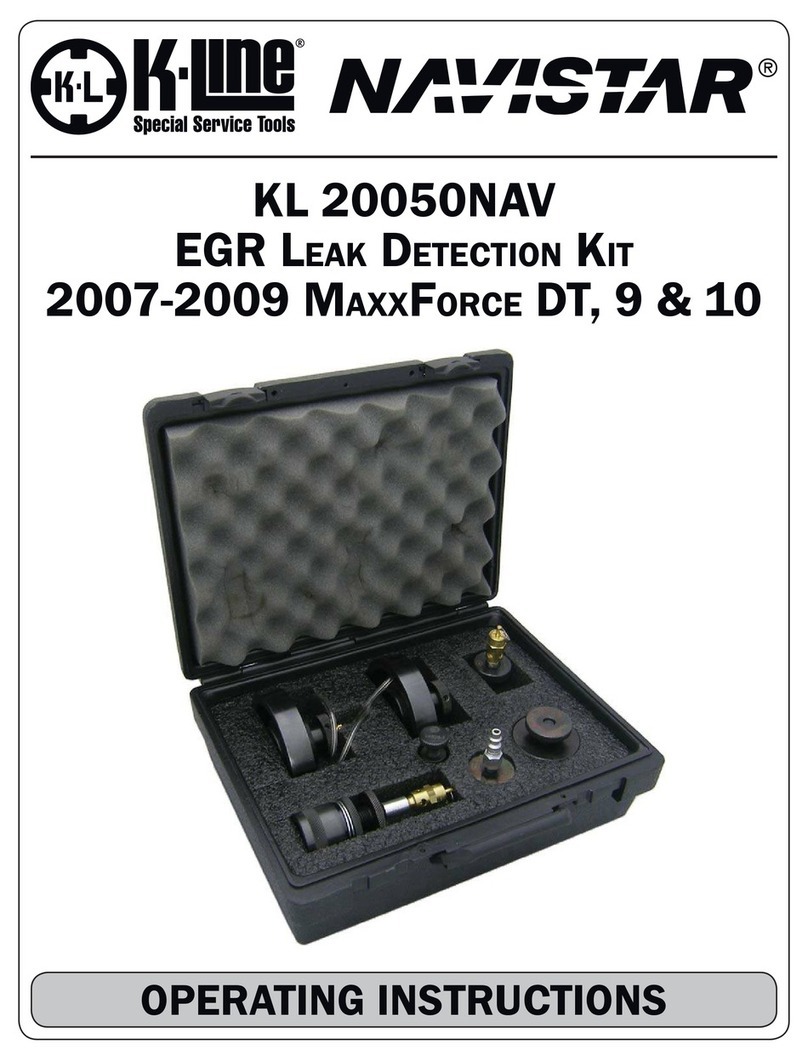
2
INTRODUCTION:
This manual contains information to help you to learn about the safe and proper use of the
KL20030 EGR Leak Detection Kit. The instructions included in this manual are not neces-
sarily all-inclusive. K-Line® cannot anticipate all conceivable or unique situations. You must
make sure all conditions and procedures do not jeopardize your personal safety.
DISCLAIMER: All information, images, and specications contained in this manual are
based on the latest information available at the time of publication. K-Line® reserves the
right to make changes at any time without notifying any person or organization of such
revisions or changes. K-Line® is not liable for incidental or consequential damages (includ-
ing lost prots) in connection with the furnishing, performance, or use of this material. If
necessary, obtain additional information from the vehicle manufacturer.
SAFETY PRECAUTIONS:
Before using the KL20030NAV EGR Leak Detection Kit read, understand,
and follow the safety precautions and operating instructions outlined in
this manual. This equipment must be operated by qualied personnel. The
operator must be familiar with vehicle cooling systems, coolants, and the
dangers they present.
If the operator cannot read English, operating instructions and safety
precautions must be read and discussed in the operator’s native language.
Si el operador no puede leer inglés, las instrucciones de operación y las
precauciones de seguridad deberán leerse y comentarse en el idioma
nativo del operador.
Si l’utilisateur ne peut lire l’anglais, les instructions et les consignes de
sécurité doivent lui être expliquées dans sa langue maternelle.
Do not drink antifreeze or solution. Avoid inhaling mist or hot vapors.
(Ethylene glycol base.) If swallowed, drink two glasses of water; induce
vomiting; and call a physician. If inhaled, move to fresh air and call a physician.
Use the unit in locations with mechanical ventilation that provides at least four
air changes per hour. If accidental system discharge occurs, ventilate the work
area before resuming work.
Contact with antifreeze/coolant may cause injury. Hot antifreeze/coolant
can burn skin and injure eyes. Wear protective equipment, including safety
goggles and gloves, when operating this equipment. If contact with eyes occurs,
call a physician immediately, and ush eyes with cold water for 30 minutes. If
contact with skin occurs, thoroughly wash area with soap and water.


























